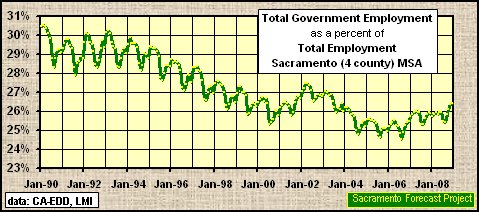CASE PREVIEW
on Dec 3, 2022
at 8:39 pm

The Supreme Court turns its attention to bankruptcy next Monday when it hears argument in MOAC Mall Holdings LLC v. Transform Holdco LLC. The case involves the authority of a court of appeals to review a bankruptcy order authorizing a bankrupt tenant to sell its interest in a lease. The lower court found its jurisdiction to review that order lacking, but the justices well might take a different view.
The dispute is easy to understand. Sears filed for bankruptcy in the fall of 2018 after it failed to adapt its business model to the competitive pressures posed by electronic commerce. A major issue in the bankruptcy proceeding was which (if any) store locations a reorganized Sears would retain. Section 365 of the Bankruptcy Code provides a detailed framework for how a bankrupt company resolves that situation. Generally, the debtor decides with respect to each contract if it wants to assume the contract or reject it. Section 365 also includes statutory rules that in some (but not all) cases permit the debtor to assign its interest in the contract to a third party. Several aspects of those rules include detailed exceptions for shopping-center leases like those under which Sears operated many of its stores.
In the spring of 2019, a few months after Sears entered bankruptcy, Sears agreed to transfer most of its assets to Transform Holdco LLC, a company formed by a former Sears executive. Because that transaction was not in the ordinary course of business, Section 363(b) of the Bankruptcy Code required Sears to seek approval from the bankruptcy court, which it readily obtained. The purchase agreement with Transform, executed shortly after the bankruptcy filing, did not contemplate that Sears and Transform would finalize treatment of the leases before that agreement became effective. Rather, it authorized Transform in the months after it acquired the tangible assets of Sears to identify the leases that it wished to acquire and then to seek approval from the bankruptcy court under Section 365 for the leases to be assumed by Sears and assigned to Transform.
MOAC Mall Holdings involves a Sears store located in the Mall of America – the largest shopping center in the United States, if not the world (more than four million square feet). Eventually, Transform decided that it wanted to retain that store. The landlord (MOAC Mall Holdings is the entity that owns the Mall of America) objected, arguing that Section 365 barred an assignment of the Mall of America lease to Transform because Transform could not provide (in the language of Section 365) “adequate assurance” of its performance under the lease, in part because Transform was not “similar to the financial condition and operating performance” of Sears as Sears existed when the lease originally was signed. The bankruptcy court rejected the landlord’s argument.
When the landlord appealed, the U.S. Court of Appeals for the 2nd Circuit declined to address the landlord’s complaint, holding that Section 363(m) deprived the appellate court of jurisdiction over the appeal. That provision (be patient, I’m finally getting to the issue before the justices) states that the “reversal or modification on appeal of an authorization under subsection (b) … of this section of a sale … of property does not affect the validity of a sale … under such authorization to an entity that purchased such property in good faith.” Because earlier 2nd Circuit precedent had interpreted Section 363(m) as a jurisdictional bar, the panel found itself powerless to address the appeal.
Perhaps, gentle reader, you are thinking that you just read a post on SCOTUSblog about a stunningly similar argument. And if you have nothing better to do than read every post I craft, then you will be thinking of Wilkins v. United States, argued last Wednesday. As I explained in my preview in Wilkins, that case involves a statute of limitations that makes no textual claim of “jurisdictional” status. A fair reading of the court’s modern line of cases well might call for a reversal of the lower court ruling that the Wilkins statute is jurisdictional.
The argument here is quite similar. The landlord points to cases establishing a clear-statement rule for treating a statute as jurisdictional (the leading case in this context being the Supreme Court’s 2006 decision in Arbaugh v. Y&H Corp.). Nothing in Section 363(m) comes close to satisfying that standard. Indeed, because the text of the statute describes the effect of an appellate court’s “reversal or modification on appeal of an authorization under subsection (b),” the statute on its face pretty directly contemplates appellate jurisdiction: How can the appellate court reverse or modify an order that it has no jurisdiction to review?
Moreover, the landlord explains, Section 363(m) refers to challenges seeking to reverse or modify an approval under 363(b) – a claimant might argue, for example, that the sale violated Section 363(e) because it did not provide “adequate protection” to some creditor of the debtor. This case, though, involves a ruling under Section 365 about the characteristics of the assignee of the lease, which has nothing to do with Section 363(b) or, indeed, with anything that the bankruptcy court considered at the time it approved the sale to Transform under Section 363.
Like the government in Wilkins, Transform (the purchaser of the lease) barely addresses the question on which the court granted review – whether Arbaugh can be reconciled with the 2nd Circuit’s treatment of Section 363(m) as jurisdictional. The question presented starts with a statement of the holding in Arbaugh and the landlord cites the case two dozen times in its brief; the first mention of the case in the argument section of Transform’s brief is less than a page from the signature line at the end of the brief. Rather, Transform presents a variety of reasons why that question is not directly relevant.
For example, Transform first argues that the court should dismiss the petition because the interest that the bankrupt debtor (Sears) formerly held in the lease has been transferred to Transform and thus is no longer within the reach of the bankruptcy court. Then, on the merits, it argues that Section 363(m) is best read as jurisdictional because (in Transform’s phrasing), the statute directly “withdraws … authority to hear appeals challenging” a transfer under Section 363. As to the landlord’s argument that the relevant order was entered under Section 365 (with regard to the assignability of the particular lease) rather than under Section 363 (with regard to the validity of the overall sale), Transform argues that the key point is the relief that the landlord seeks. Because the ultimate relief the landlord wants is to invalidate the transfer of the lease to Transform, Transform urges that Section 363(m) should bar appellate review.
As I suggested in the parallel circumstances in Wilkins, the most common reason for a skilled advocate to file a brief that spends little or no time directly confronting the question on which the court granted review is that the advocate has little that is compelling to say on that point. If I’m correct in reading this case and Wilkins as a matched set, the argument on Monday should present more than a hint of that sentiment.






More Stories
Digital Law Firm Marketing: Best Techniques for Online Growth
Choosing the Right Louisiana Property Damage Attorney: A VITAL Guide
Get Ready for Success: Dive Bomb Industries Waterfowl Gear Explained